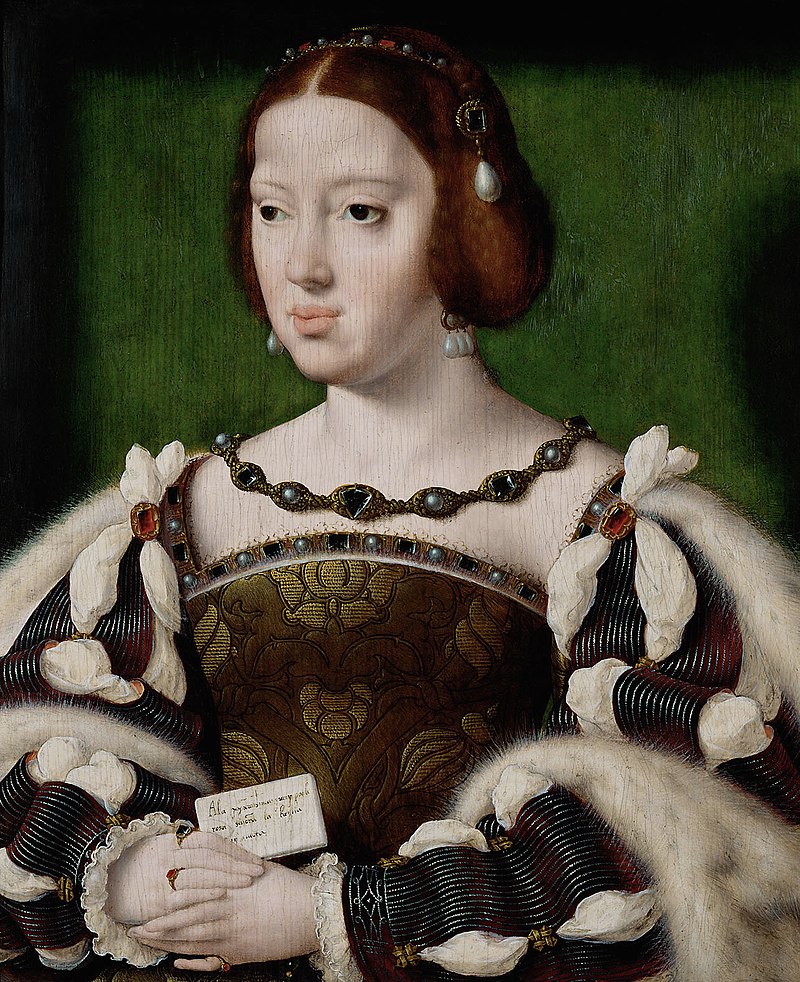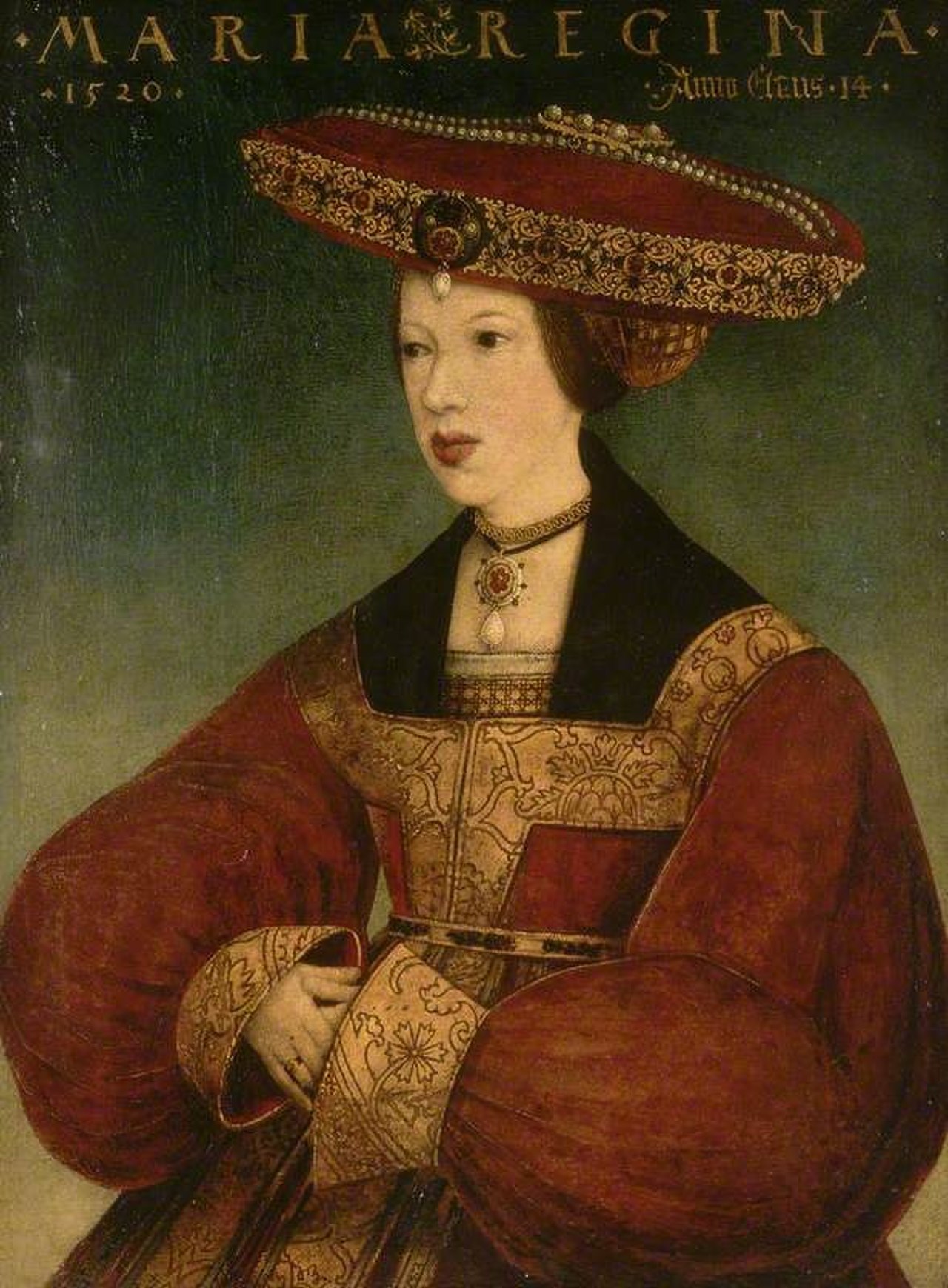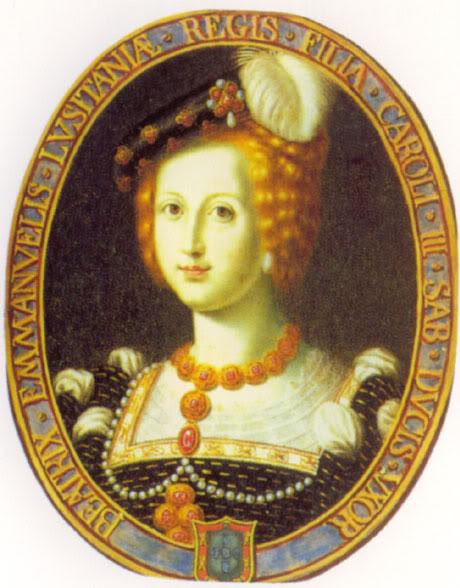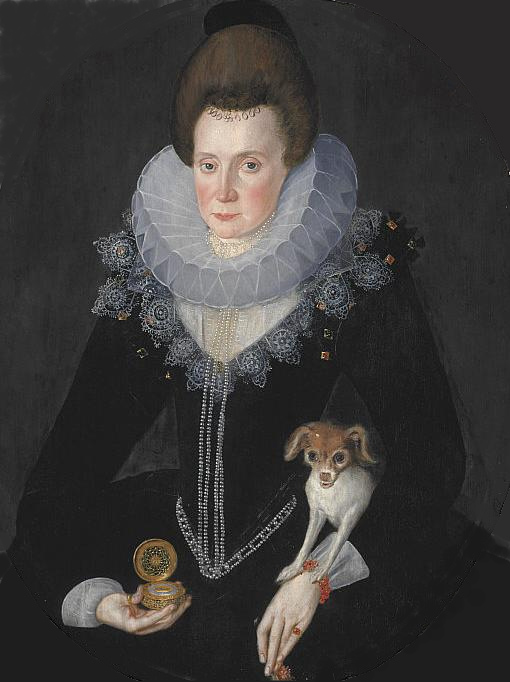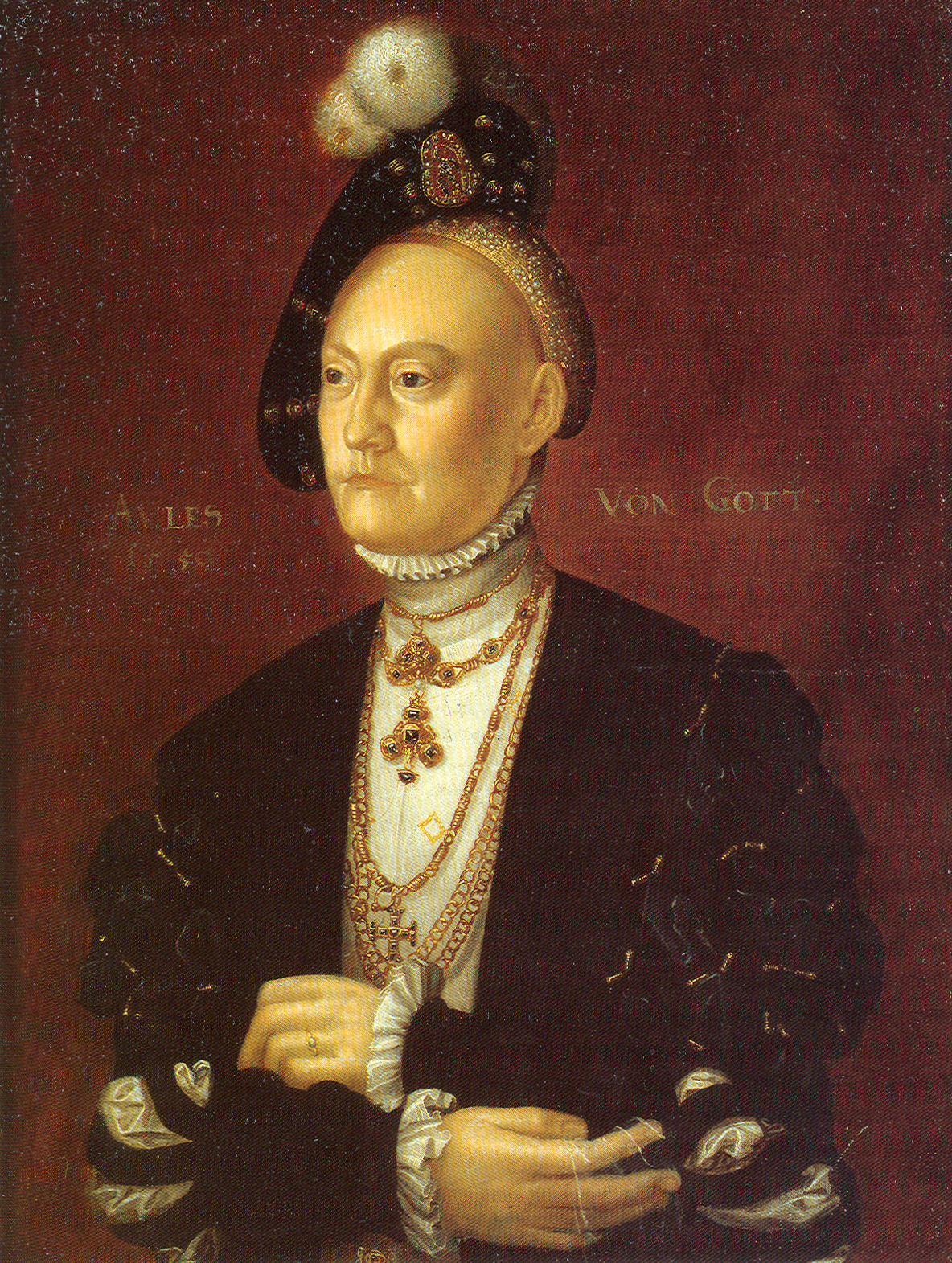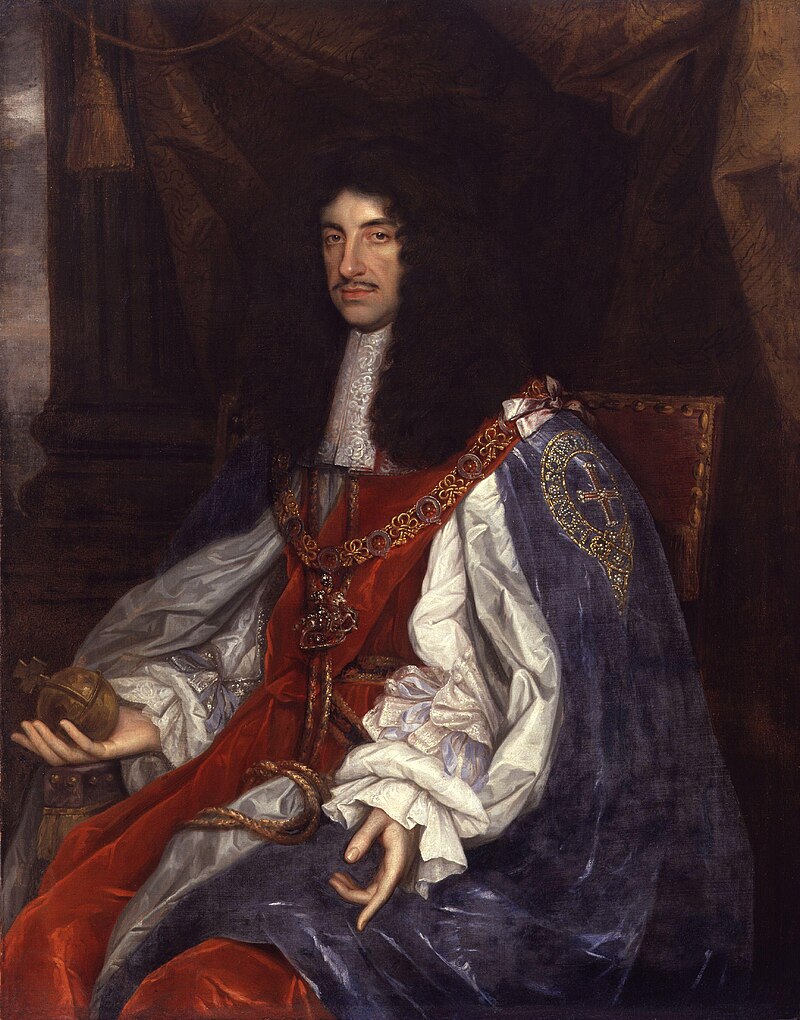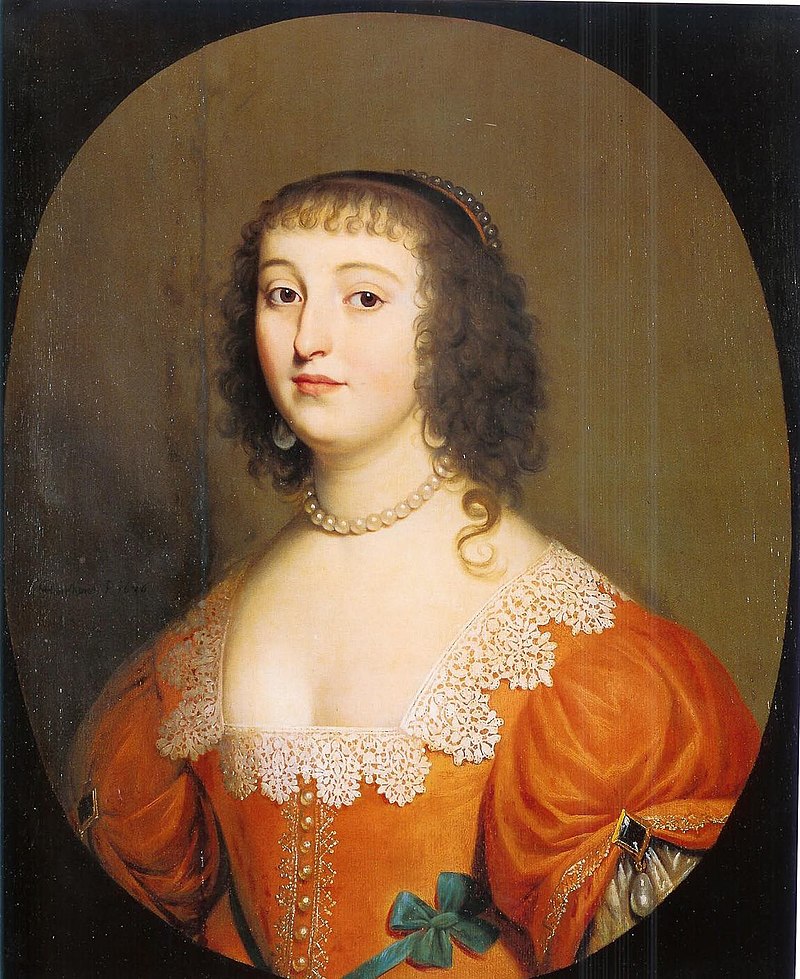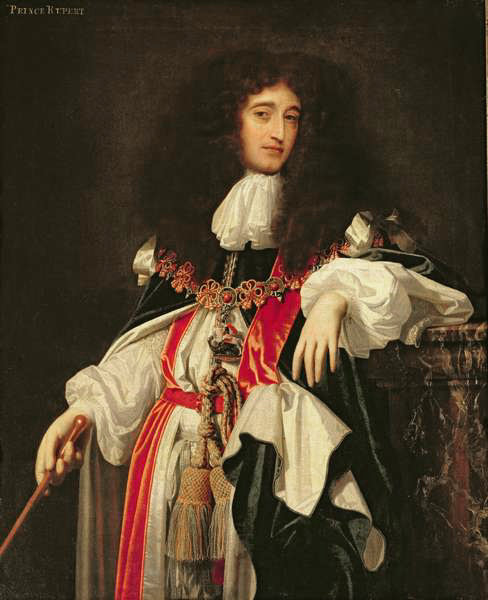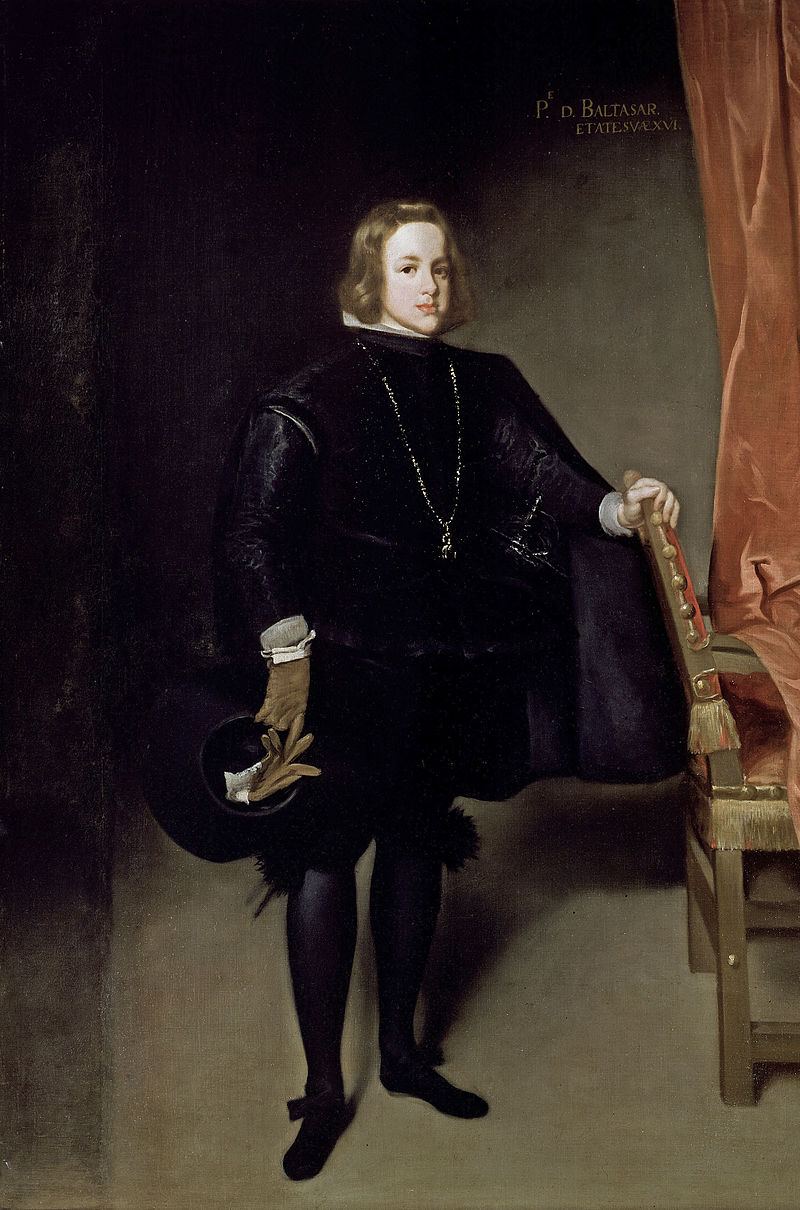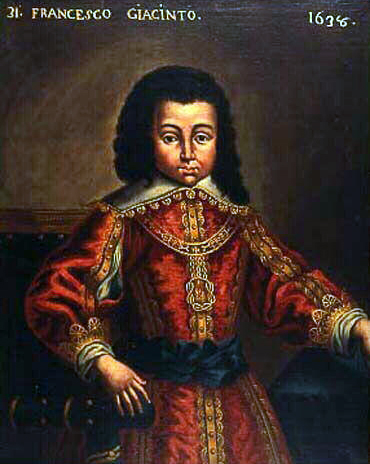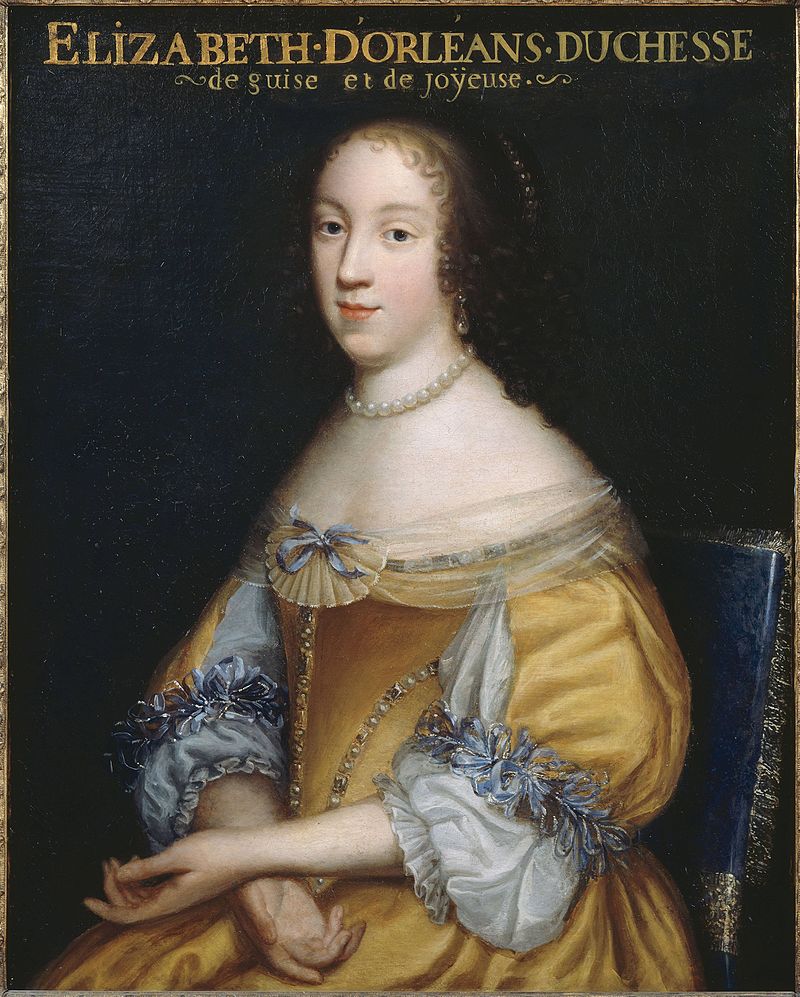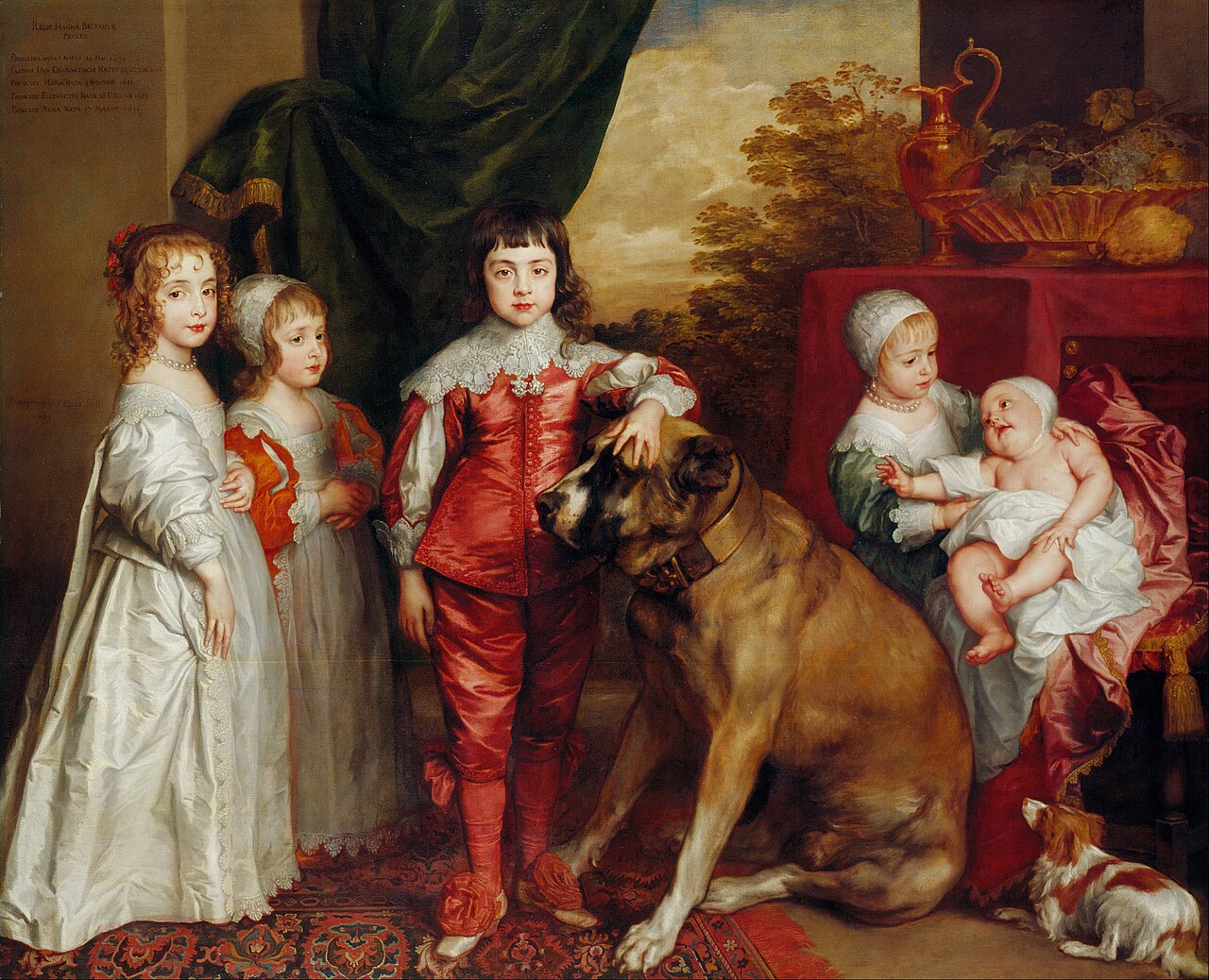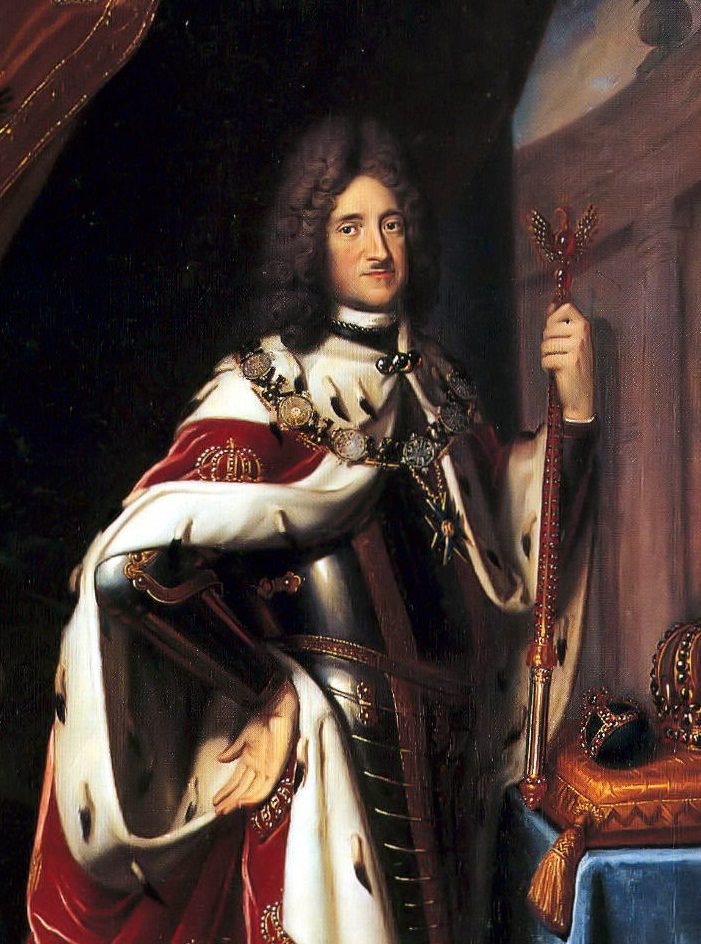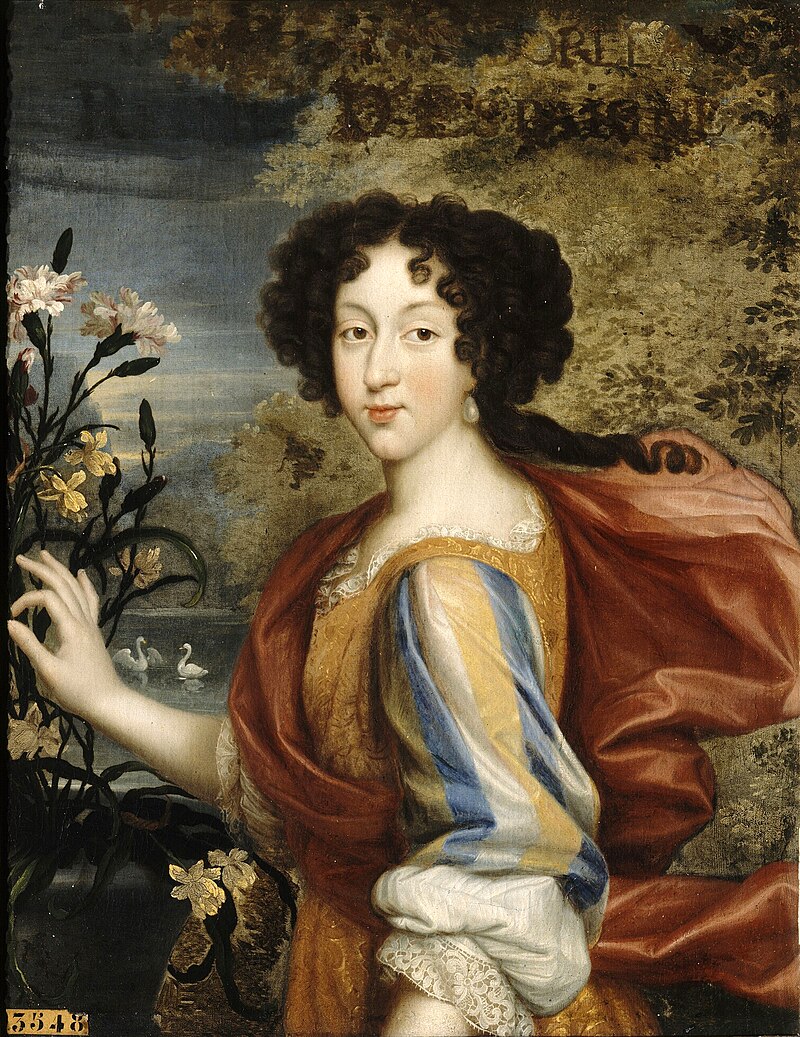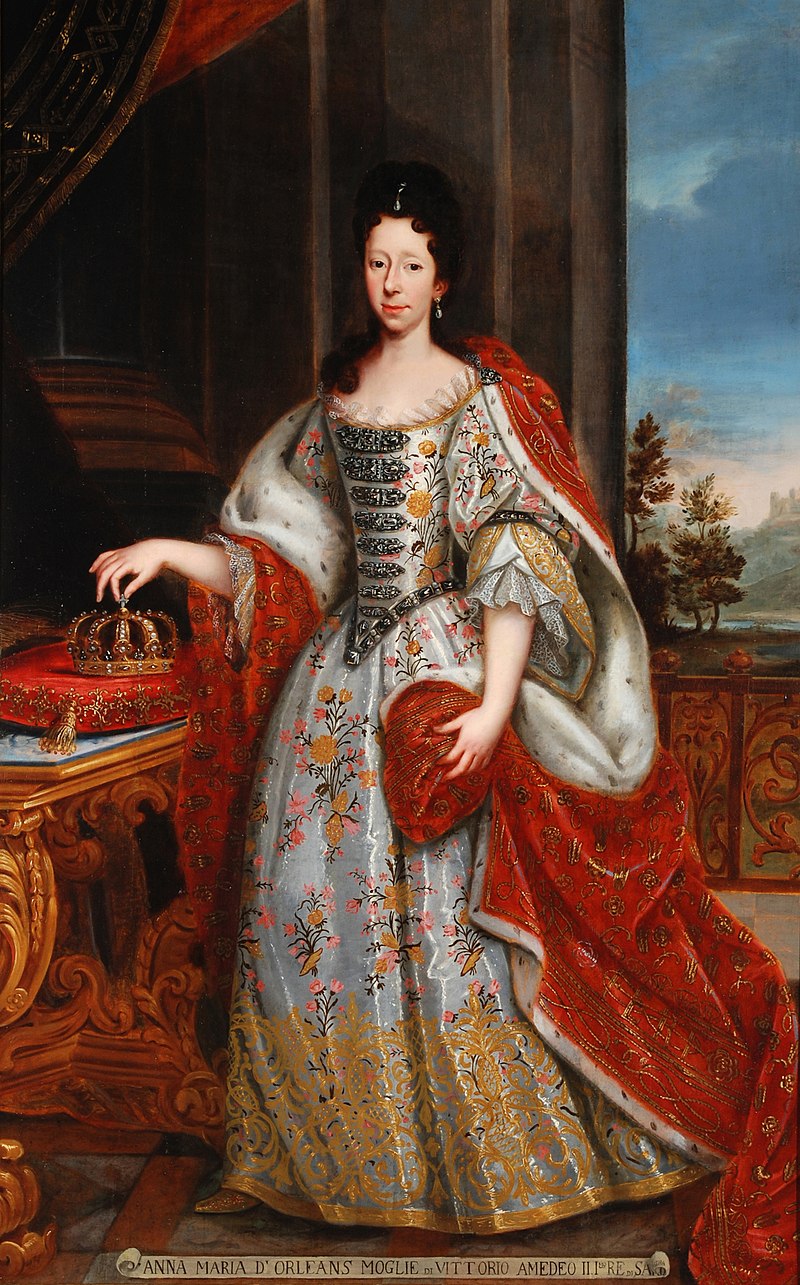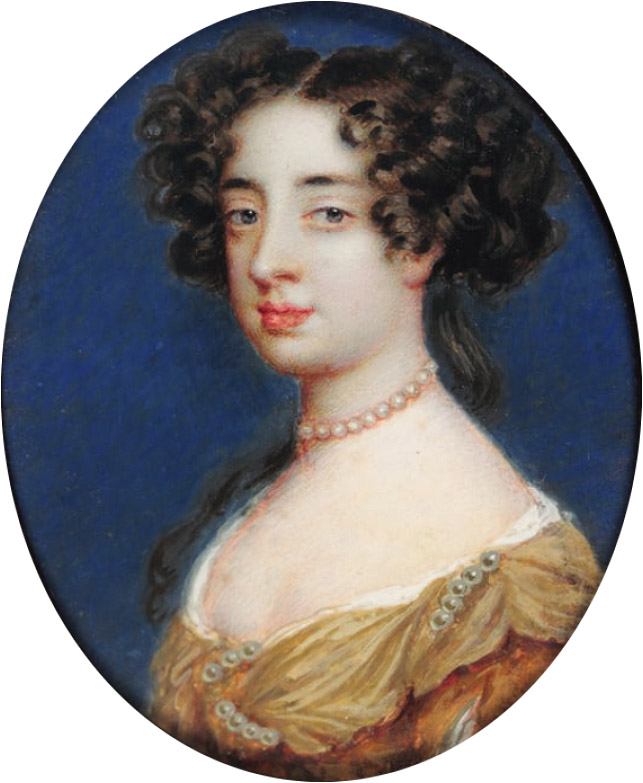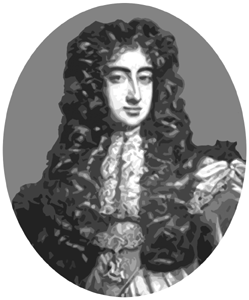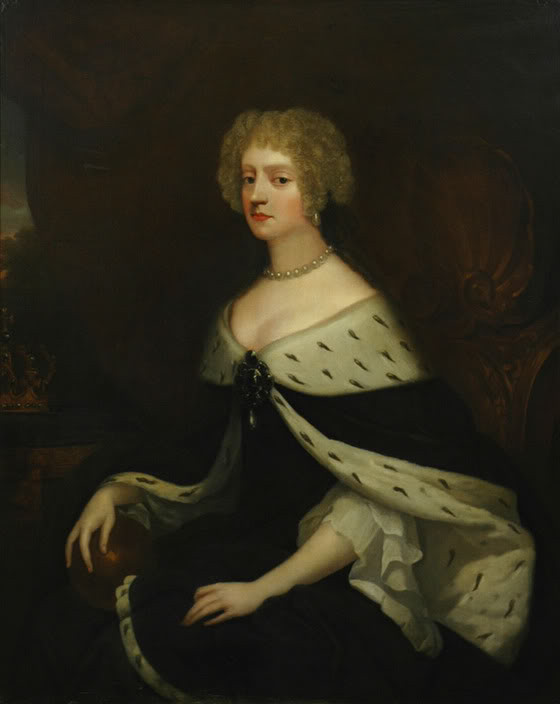by Susan Flantzer
© Unofficial Royalty 2019
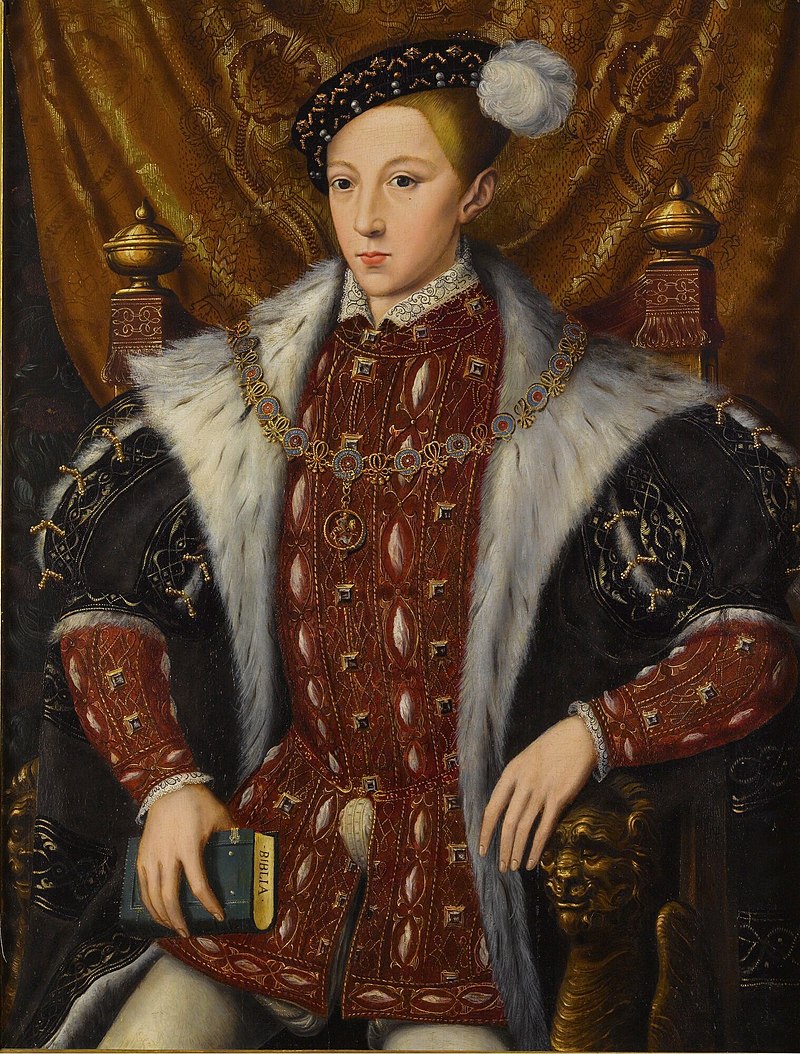
King Edward VI of England (1537 – 1553)
(All photos credits – Wikipedia unless otherwise noted)
King Henry VIII finally got his long-awaited male heir, the future King Edward VI, via his third wife Jane Seymour who died twelve days after her son’s birth, most likely from puerperal fever or childbed fever, a bacterial infection. Edward VI’s paternal grandparents were King Henry VII of England and Elizabeth of York, the eldest child of King Edward IV of England and Elizabeth Woodville. His maternal grandparents were Sir John Seymour of Wolf Hall and Margery Wentworth.
Edward was well educated by tutors who were among the greatest scholars in England. These tutors not only gave Edward a strong education, but they also imparted to him the tenets of the Protestant Reformation that had swept through Germany and the Netherlands. Nine-year-old Edward succeeded his father upon his death in 1547. Edward VI’s maternal uncle Edward Seymour, 1st Duke of Somerset was made Lord Protector of the Realm and Governor of the King’s Person. With this new position, Edward Seymour had almost regal power.
Edward Seymour’s younger brother Thomas Seymour, who had married Henry VIII’s widow Catherine Parr (who died after childbirth in 1548), was embittered over the power his older brother had and demanded a share of the power. In March 1549, Thomas was arrested on various charges and beheaded for treason.
Seven months later, Edward Seymour became aware that his rule as Lord Protector was being threatened. Seymour took possession of his nephew, and then went to the safety of the fortified Windsor Castle, where Edward VI wrote, “Me thinks I am in prison.” Seymour was arrested and eventually executed. John Dudley, Earl of Warwick (later 1st Duke of Northumberland and Lady Jane Grey‘s father-in-law (who would lose his head due to his involvement in Lady Jane’s succession to the throne) became the leader of the Regency Council and Lord Protector.
During the reign of King Edward VI, the English Protestant Reformation advanced with the approval and encouragement of Edward VI. Thomas Cranmer, Archbishop of Canterbury (who was to be burned for heresy under the reign of Queen Mary I) wrote and compiled the first two editions of the Book of Common Prayer, a complete liturgy for the English Church which is still used. Cranmer also revised canon law and prepared a doctrinal statement, the Thirty-Nine Articles, to clarify the practice of the reformed religion.
In January 1553, King Edward became ill with a fever and cough that gradually worsened. It is probable that he had tuberculosis. By May 1553, the royal doctors had no hope that the king would recover and John Dudley, 1st Duke of Northumberland and Lord Protector, became to scheme for a succession that would benefit him. The powerful Duke of Northumberland thought marrying one of his sons to Lady Jane Grey would be a good idea and Lord Guildford Dudley, the fifth surviving son of the Duke of Northumberland married Lady Jane Grey.
King Edward VI’s death and the succession of his Catholic half-sister Mary would spell trouble for the English Reformation. What exact role the Duke of Northumberland had in what followed is still debated, but surely he played a big part in the unfolding of what happened. King Edward composed a document “My devise for the succession” in which he passed over his half-sisters and the Duchess of Suffolk (Frances Brandon, the elder surviving daughter of Mary Tudor, the younger surviving daughter of King Henry VII). Edward meant for the throne to go to the Duchess’ daughters and their male heirs.
After great suffering, fifteen-year-old King Edward VI died. Lady Jane Grey was told that she was Queen, and reluctantly accepted the fact. However, the Privy Council switched their allegiance from Jane to Edward’s sister Mary and proclaimed her Queen. Mary arrived triumphantly into London accompanied by her half-sister Elizabeth and a procession of over 800 nobles and gentlemen. Ultimately, Lady Jane Grey, her husband, her father and her father-in-law would all lose their heads.
Edward shared his paternal first cousins with his half-sisters Queen Mary I of England and Queen Elizabeth I of England.
********************
Paternal Aunts and Uncles of Edward VI of England: Children of King Henry VII of England and Elizabeth of York
- Arthur, Prince of Wales (1486 – 1502), married Catherine of Aragon, no children
- Margaret Tudor, Queen of Scots (1489 – 1541), married (1) James IV, King of Scotland, had four sons but the only surviving one was King James V of Scotland; (2) Archibald Douglas, 6th Earl of Angus, had one daughter; (3) Henry Stewart, 1st Lord Methven, no surviving children
- Elizabeth Tudor (1492 – 1495), died in childhood
- Mary Tudor, Queen of France, Duchess of Suffolk (1496 – 1533), married (1) Louis XII, King of France, no children; (2) Charles Brandon, 1st Duke of Suffolk, had two sons and two daughters
- Edmund Tudor, Duke of Somerset (1499 – 1500), died in infancy
- Katherine Tudor (born and died February 1503), her mother Elizabeth of York died as a result of Katherine’s birth
********************
Maternal Aunts and Uncles of King Edward VI of England: Children of Sir John Seymour and Margery Wentworth
- Edward Seymour, 1st Duke of Somerset, Lord Protector (circa 1500 – 1552), married (1) Catherine Fillol, had two sons (2) Anne Stanhope, had four sons and six daughters
- Sir Henry Seymour (1503 – 1578) married Barbara Morgan, had three sons and seven daughters
- John Seymour (1504 – 1510), died in childhood
- Thomas Seymour, 1st Baron Seymour of Sudeley (circa 1508 – 1549) married Catherine Parr, sixth wife and widow of King Henry VIII, had one daughter Mary; Catherine died due to childbirth complications, and there is no mention of Mary after her second birthday
- Anthony Seymour (died circa 1528)
- Elizabeth Seymour (circa 1518 – 1568), married (1) Sir Anthony Ughtred, had two sons (2) Gregory Cromwell, 1st Baron Cromwell of Oakham, son of Thomas Cromwell, chief minister of King Henry VIII, had three sons and two daughters (3) John Paulet, 2nd Marquess of Winchester, no children
- Margery Seymour (died circa 1528)
- Dorothy Seymour (born circa 1519) married (1) Sir Clement Smith, had four daughters and three sons (2) Thomas Leventhorpe of Shingle Hall, no children
********************
PATERNAL FIRST COUSINS
Paternal First Cousins of Edward VI of England: Children of Margaret Tudor and James IV, King of Scotland
James, Duke of Rothesay (1507 – 1508)
James was born at Holyrood Palace in Edinburgh, Scotland. He was styled Duke of Rothesay, the title held by the eldest son of the King of Scots who is also the heir apparent. James died at Stirling Castle in Stirling, Scotland six days after his first birthday.
*********************
Arthur, Duke of Rothesay (1509 – 1510)
Arthur was born at Holyrood Palace in Edinburgh, Scotland. As his elder brother had died, he was the eldest son of the King of Scots and the heir apparent, so he was styled Duke of Rothesay. He died when he was eight months old at Edinburgh Castle in Edinburgh, Scotland.
*********************

James V, King of Scots (1512 – 1542)
Born at Linlithgow Palace in Linlithgowshire, Scotland, at his birth, James became Duke of Rothesay, the traditional title of the eldest son of the King of Scots as his two elder brothers James and Arthur had died in infancy. His 30-year-old father James IV was killed at the Battle of Flodden and 17-month-old James succeeded his father as James V, King of Scots.
James married 16-year-old Madeleine of Valois, daughter of King François I of France. Madeleine, who was sickly since her birth, had developed tuberculosis. Six months after the wedding and just two months after arriving in Scotland, Madeleine died. Less than a year after the death of his first wife, James V married again to Marie of Guise, the eldest daughter of Claude of Lorraine, Duke of Guise, head of the House of Guise. James V and Marie had two sons and one daughter, but their sons died in infancy.
After a disastrous defeat of the Scots army by the English army at the Battle of Solway Moss, James V fled to Falkland Palace in Fife, Scotland where he became ill and took to his bed. Overcome with grief and shame about the Battle of Solway Moss, James V lost the will to live. The news that Marie of Guise had given birth to a daughter did nothing to raise his spirits. 30-year-old James V, King of Scots died and was succeeded by his only surviving, legitimate child, six-day-old Mary, Queen of Scots.
*********************
Alexander, Duke of Ross (1514 – 1515)
Alexander was born at Holyrood Palace in Edinburgh, Scotland, seven months after the death of his father King James IV at the Battle of Flodden. He died four months short of his second birthday at Stirling Castle in Stirling, Scotland.
*********************
Paternal First Cousins of Edward VI of England: Child of Margaret Tudor and her second husband Archibald Douglas, 6th Earl of Angus
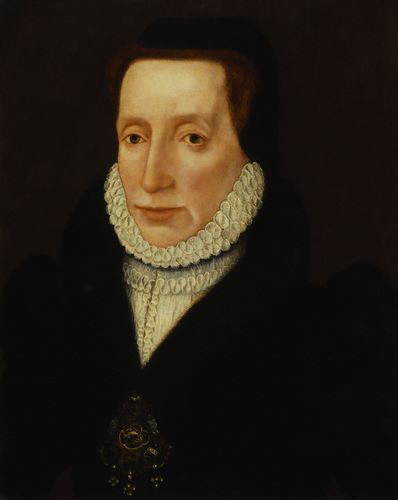
Lady Margaret Douglas, Countess of Lennox (1515 – 1578)
Margaret was the only child of Margaret Tudor and the second of her three husbands, Archibald Douglas, 6th Earl of Angus. Prior to her birth, Margaret’s parents left Scotland for England because of difficulties her father was having in Scotland, and so, Margaret was born in England. She was brought up in England with her cousin Mary, the future Queen Mary I. The two cousins remained close to each other their whole lives. Margaret married a Scottish exile, Matthew Stewart, 4th Earl of Lennox. The couple had several children but only two sons survived childhood. Their elder son Henry Stuart, Lord Darnley was the second of the three husbands of his first cousin Mary, Queen of Scots. Their only child was James VI, King of Scots who succeeded Queen Elizabeth I of England as James I, King of England. Through her grandson King James I, Margaret is an ancestor of the British royal family and many other European royal families. When Margaret died, she was given a grand funeral by her cousin Queen Elizabeth I and was buried at Westminster Abbey where a beautiful tomb was erected, most likely by her grandson King James I, in the same chapel where James later erected a tomb for his mother Mary, Queen of Scots.
*********************
Paternal First Cousins of Edward VI of England: Children of Mary Tudor and Charles Brandon, 1st Duke of Suffolk
Henry Brandon (1516 – 1522), died in childhood
*********************

Lady Frances Brandon, Duchess of Suffolk (1517 – 1559)
Although Frances and her siblings were only the children of a duke, they had their mother’s royal blood. They were the grandchildren of King Henry VII of England and the nieces and nephews of King Henry VIII of England, and therefore had claims to the English throne. Frances married Henry Grey, 3rd Marquess of Dorset, later Duke of Suffolk. They had a son and a daughter who both died young and then had three daughters including Lady Jane Grey. As the niece of King Henry VIII, Frances was one of the highest-ranking women at court and often took on ceremonial duties. When Henry VIII died, his only son and Frances’ first cousin, succeeded him as King Edward VI.
Edward VI was sickly and probably had tuberculosis. His reign would only last six years. Edward VI’s death and the succession of his Catholic half-sister Mary would spell trouble for the English Reformation. Edward opposed his half-sister Mary’s succession not only for religious reasons but also because he believed her to be illegitimate and his belief in male succession. He also opposed the succession of his half-sister Elizabeth for reasons of illegitimacy and belief in male succession. King Edward VI composed a document “My devise for the succession” in which he passed over his half-sisters and Frances. Edward meant for the throne to go to the Frances’ daughters and their male heirs. After great suffering, fifteen-year-old King Edward VI died and Frances’ eldest daughter Lady Jane Grey was told that she was queen, and reluctantly accepted the fact. Jane’s reign lasted only nine days. Henry VIII’s elder daughter and Jane’s first cousin Mary gathered an army and marched on London. In the aftermath, among those executed were Frances’ husband, her daughter Jane, and Jane’s husband Lord Guildford Dudley.
Frances’ life was now in ruins. Because her husband was a traitor, all his possessions reverted to the Crown. Frances managed to plead with her cousin Queen Mary I to show mercy. Mary agreed that some of the Duke of Suffolk’s property could remain with the family. Frances married her Master of the Horse Adrian Stokes and they had two stillborn children and a daughter who died in infancy. Frances, aged 42, died during the reign of her first cousin Queen Elizabeth I who paid the cost of her funeral. She was buried at Westminster Abbey. Four years later, her widower Adrian Stokes had a beautiful tomb and effigy placed over her grave.
*********************

Portrait of either Lady Eleanor or her daughter Lady Margaret
Lady Eleanor Brandon, Countess of Cumberland (1519 – 1547)
Eleanor married Henry Clifford, 2nd Earl of Cumberland. Eleanor’s uncle King Henry VIII attended her wedding. Eleanor and her husband had two sons who did not survive infancy and one daughter Lady Margaret Clifford. Eleanor received the honor of being chief mourner at the funeral of Catherine of Aragon, Henry VIII’s first wife.
*********************

Henry Brandon, 1st Earl of Lincoln (circa 1523 – 1534)
Henry was created Earl of Lincoln by his uncle Henry VIII when he was two-years-old. He died when he was ten or eleven years old.
********************
MATERNAL FIRST COUSINS
Maternal First Cousins of King Edward VI of England: Children of, Edward Seymour, 1st Duke of Somerset, Lord Protector and his first wife Catherine Fillol
John Seymour (1527 – 1552)
Edward Seymour, 1st Duke of Somerset’s two sons by his first wife remained loyal to their father and Jon was imprisoned in the Tower of London with him where he died after being imprisoned for three years. All of his lands had been taken from him but he successfully petitioned for the restoration of his inheritance from his mother. However, his mother’s lands had been sold so in compensation he received the lands of a granted to his father at the Dissolution of the Monasteries by King Henry VIII, which had descended to his half-siblings. At his death, John’s estate was left to his younger brother Lord Edward Seymour.
********************
Lord Edward Seymour (1529 – 1593)
After the death of Lord Edward’s mother, his father Edward Seymour, 1st Duke of Somerset married Anne Stanhope and they had ten children. Probably influenced by his second wife, the Duke of Somerset had declared the two sons of the first marriage declared illegitimate because of his first wife’s suspected adultery. His titles and properties would then pass directly to the children of his second marriage.
Lord Edward, however, did benefit from appointments granted to him by his father, who became increasingly powerful and influential with his appointment as Lord Protector. However, the lust for power of his father and uncle Thomas Seymour did not affect Lord Edward and he did not become involved in their intrigues and plotting which caused their death sentence for treason.
Lord Edward married Margaret Walshe, a daughter and co-heiress of John Walshe of Cathanger, a Justice of the Common Pleas and a Member of Parliament. They had one son Sir Edward Seymour, 1st Baronet. Eventually, Lord Edward’s descendants were granted the title denied him centuries before. When the last descendant of Edward Seymour, 1st Duke of Somerset and his second wife Anne Stanhope died in 1750 without children. The title of Duke of Somerset then passed to the descendants of Lord Edward and the current Duke of Somerset is his descendant.
********************
Maternal First Cousins of King Edward VI of England: Children of Edward Seymour, 1st Duke of Somerset, Lord Protector and second wife Anne Stanhope
Edward Seymour, Viscount Beauchamp of Hache (1537 – 1539)
Edward was known by one of his father’s subsidiary titles. He died when he was two-years-old.
********************

Edward Seymour, 1st Earl of Hertford (1539 – 1621)
Edward was educated with his cousin Edward VI and was knighted on Edward VI’s coronation day. After his father was executed, Edward was barred from inheriting his titles and his estate. However, his cousin King Edward VI did restore some lands to him and Queen Elizabeth I created him Earl of Hertford.
Edward married Lady Catherine Grey, a younger sister of Lady Jane Grey without the approval of Queen Elizabeth I. Because Lady Catherine was in the line of succession to the throne as a descendant of Mary Tudor, daughter of King Henry VII, her marriage needed approval from Queen Elizabeth I. Both Edward and Catherine were confined to the Tower of London. While imprisoned in the Tower of London, Catherine gave birth to two sons. The marriage was annulled and Edward and Catherine were censured as fornicators by the Archbishop of Canterbury. Their sons were declared illegitimate and therefore, not eligible to succeed to the throne. However, this did not stop them from being courted as potential heirs to the throne. After the birth of their second child, Queen Elizabeth I ordered the couple to permanently separate. Catherine died of tuberculosis several years later.
Edward married secretly again two more times but both marriages were childless. His second marriage to Frances Howard was kept a secret for nearly ten years. Edward attempted to have this marriage set aside, still hoping to have his sons by Catherine declared legitimate. He was once again arrested and Frances died.
His third wife was the wealthy widow Frances Prannell, forty years younger than Edward. She had also been born Frances Howard, the daughter of Thomas Howard, 1st Viscount Howard of Bindon who was the son of Thomas Howard, 3rd Duke of Norfolk. The marriage was performed in secret by Thomas Montfort without banns or license and Monfort was suspended for three years from his clergy position. The marriage lasted twenty years, until Edward’s death.
********************
Lady Anne Seymour, Countess of Warwick (1538 – 1588)
Lady Anne married John Dudley, 2nd Earl of Warwick, the son and heir of John Dudley, 1st Duke of Northumberland, who lost his head because of the Lady Jane Grey incident. Her husband was imprisoned in the Tower of London with his father. He was eventually released but died a few days later due to illness. Lady Anne’s second husband was Sir Edward Unton, a Member of Parliament with whom she had two sons. She suffered from mental illness and was placed in the custody of one of her sons. Anne along with her sisters Jane and Margaret wrote a poem called Hecatodistichon upon the death of Marguerite, wife of King Henri III of Navarre and the sister of King François I of France. The poem was the only work by Englishwomen published in Latin in the 16th century, and the only work by any Englishwomen published in any language before the 1560s.
********************
Lord Henry Seymour (1540 – 1588)
Lord Henry was a naval commander during the reign of Queen Elizabeth I. In his position as Admiral of the Narrow Seas, he took part in the Battle of Gravelines against the Spanish Armada. He married Lady Joan Percy, daughter of Thomas Percy, 7th Earl of Northumberland.
********************
Lady Margaret Seymour (born 1540)
Lady Margaret, along with her sisters Anne and Jane wrote a poem called Hecatodistichon upon the death of Marguerite, wife of King Henri III of Navarre and the sister of King François I of France. The poem was the only work by Englishwomen published in Latin in the 16th century, and the only work by any Englishwomen published in any language before the 1560s.
********************
Lady Jane Seymour (1541 – 1561)
Lady Jane, along with her sisters Anne and Margaret wrote a poem called Hecatodistichon upon the death of Marguerite, wife of King Henri III of Navarre and the sister of King François I of France. The poem was the only work by Englishwomen published in Latin in the 16th century, and the only work by any Englishwomen published in any language before the 1560s.
Lady Jane served as a Maid of Honor to Queen Elizabeth I. She was the only witness to the secret marriage of her brother Edward and Lady Catherine Grey but she died of tuberculosis at the age of 20 before the marriage was discovered.
********************
Lady Catherine Seymour (1548–1625)
********************
Lord Edward Seymour (1548 – 1574), unmarried
********************
Lady Mary Seymour (born 1552)
Lady Mary married Andrew Rogers, a Member of Parliament but the marriage was childless. Her second husband was Sir Henry Peyton.
********************
Lady Elizabeth Seymour (1552 – 1602)
Lady Elizabeth married Sir Richard Knightley of Fawsley Hall and had seven sons and seven daughters.
********************
Maternal First Cousins of King Edward VI of England: Children of Sir Henry Seymour and Barbara Morgan
- Sir John Seymour, married Susan Powlett, had three sons
- Jane Seymour (died 1634), married Sir John Rodney of Stoke Rodney, had sixteen children but only four sons and three daughters survived
********************
Maternal First Cousins of King Edward VI of England: Children of Thomas Seymour, 1st Baron Seymour of Sudeley and Catherine Parr, Queen of England
Mary Seymour (1548 – circa 1550)
Mary was born at Sudley Castle in Gloucestershire, England. Although her mother, Catherine Parr, the widow of King Henry VIII, had been married four times, Mary was her only child. Tragically Catherine died six days after Mary’s birth of puerperal fever or childbed fever. Her daughter Mary Seymour appears to have died young. Six months after Catherine’s death, Thomas Seymour was beheaded for treason.
********************
Maternal First Cousins of King Edward VI of England: Children of Elizabeth Seymour and her first husband Sir Anthony Ughtred
Sir Henry Ughtred (1533 – 1598)
Sir Henry was a Member of Parliament, a shipowner, and shipbuilder. He married Elizabeth Paulet, daughter of John Paulet, 2nd Marquess of Winchester. After his first wife died, Sir Henry married again but the name of his second wife is unknown.
********************
Margery Ughtred (born circa 1535)
Margery married William Hungate of Burnby, Yorkshire
********************
Maternal First Cousins: Children of Elizabeth Seymour and her second husband Gregory Cromwell, 1st Baron Cromwell of Oakham, son of Thomas Cromwell, chief minister of King Henry VIII
Henry Cromwell, 2nd Baron Cromwell, (1538 – 1592)
Henry married Mary Paulet, daughter of John Paulet, 2nd Marquess of Winchester and had two sons and one daughter.
********************
Edward Cromwell (born 1539), died young
********************
Thomas Cromwell, (circa 1540 – 1611)
Thomas was he was educated at St John’s College, Cambridge. He married Katherine Gardner and had five sons and four daughters. He was a Member of Parliament. His diaries of proceedings in the House of Commons are an important source for historians of parliamentary history.
********************
Catherine Cromwell (circa 1541 – ? )
Catherine married Sir John Strode of Parnham, Dorset.
********************
Frances Cromwell (circa 1544 – 1562)
Frances married Richard Strode of Newnham, Devon.
********************
Maternal First Cousins of King Edward VI of England: Children of Dorothy Seymour and Sir Clement Smyth
- Bennett Smyth
- Clement Smyth
- Anne Smyth
- Dorothy Smyth
- Mabel Smyth
- Grace Smyth
- John Smyth (born 1531)
********************
This article is the intellectual property of Unofficial Royalty and is NOT TO BE COPIED, EDITED, OR POSTED IN ANY FORM ON ANOTHER WEBSITE under any circumstances. It is permissible to use a link that directs to Unofficial Royalty.
Works Cited
-
- Lundy, D. (2019). Main Page. [online] Thepeerage.com. Available at: http://www.thepeerage.com/. (for genealogy information)
- Unofficial Royalty. (2019). Unofficial Royalty. [online] Available at: https://www.unofficialroyalty.com. (for biographical and genealogy information)
- Wikipedia. (2019). Main Page. [online] Available at: https://en.wikipedia.org/. (for biographical and genealogy information)


